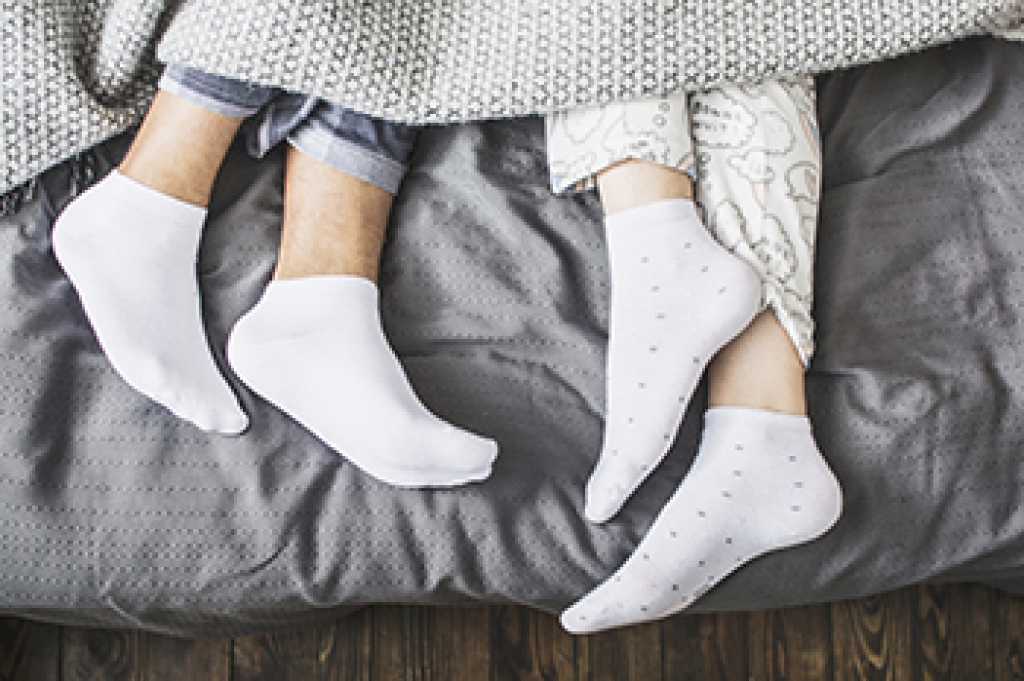
Cold feet can come on from it simply being a cold day. When the body is in a colder climate, blood vessels in the extremities will constrict, and blood flow to these areas will be reduced. While this helps keep more important parts of the body warmer, the feet will be cold. With a continued reduction in blood flow, oxygen to tissues decreases and they take on a bluish color. They will return to their normal color when the cold is reduced. A condition known as Raynaud’s phenomenon can happen when exposure to cold temperatures or high stress can cause limited blood circulation, resulting in cold or numb toes. When one is highly stressed or anxious, they might also get cold feet. A natural response to this condition is to pump adrenaline into the bloodstream, which in turn causes blood vessels to constrict and decreases blood flow to the extremities. Using a heating pad or foot baths to warm the feet, wearing socks and slippers, moving around, and trying to reduce stress can greatly help. If the weather is normal and one has cold feet, it could be a symptom of underlying health issues, including circulation problems, diabetes, or thyroid issues. If you have persistent cold feet and you cannot find relief, it is suggested that you see a chiropodist for an examination and treatment.
The winter months can bring about new or worsening foot and ankle problems. If you’re suffering from foot or ankle pain, please consult with one of our chiropodists from West Toronto Foot & Ankle Clinic Inc. . Our chiropodist can help you maintain the health of your lower limbs and your mobility.
Winter Foot Problems
- Cracked heels - Dry, cracked skin on the heels of the feet that is associated with cold, dry weather
- Athlete’s foot - A fungal infection on the skin of the feet
- Blisters - Fluid-filled bubbles of skin that usually form in response to friction
- Fractures - Broken bones in the feet or ankles
- Metatarsalgia - General foot pain
- Chilblains - Spasming of the small blood vessels in the toes in response to exposure to cold weather
- Raynaud’s disease - Numbness, pain, and color changes in the toes due to cold weather
Prevention
- Wear warm socks and shoes
- Avoid prolonged exposure to the cold
- Moisturize the heels regularly
- Keep your feet clean and dry
- Walk carefully in areas that may be icy
- Wear non-slip shoes
If you have any questions please feel free to contact our office located in Toronto, ON .
